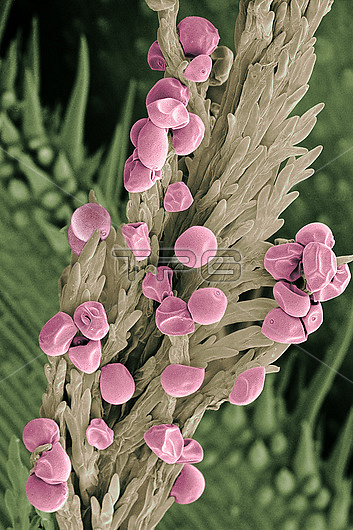
Scanning electron micrograph of a floret of cocksfoot grass, Dactylis glomerata. The picture shows the feathery stigma (brown) with adhering pollen grains (red), 35 microns across. Grasses are wind-pollinated. This is an inefficient process, relying on the vagaries of air currents to carry pollen to neighbouring plants. The pollen wall is not thickened or sculpted; the grains are light. The stigma is held vertically and is branched so as to intercept any that pass by. The distance travelled by a grass pollen grain is usually only a few metres, unless it is lifted by convection currents. Grasses have evolved to produce large amounts of pollen in order to counter the unavoidable wastage. On warm dry summer days, pollen can ascend into the air and be carried to the eyes and noses of human beings. Those susceptible suffer allergic rhinitis. D. glomerata is a major cause of hay fever.
| px | px | dpi | = | cm | x | cm | = | MB |
Details
Creative#:
TOP26624784
Source:
達志影像
Authorization Type:
RM
Release Information:
須由TPG 完整授權
Model Release:
N/A
Property Release:
N/A
Right to Privacy:
No
Same folder images:

 Loading
Loading